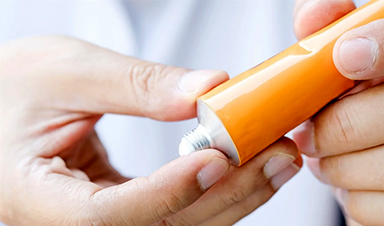An international team, led by researchers from Australia, have developed a system using nanotechnology that could allow people with diabetes to take oral insulin in the future. The researchers say the new insulin could be eaten by taking a tablet or even embedded within a piece of chocolate.
The new nano carrier, tested in mice, rats and baboon animal models, could help people with diabetes avoid side-effects linked to insulin injections such as hypoglycemia (a low blood sugar event, when too much insulin has been injected).
These animal studies have shown that the greatest strength of the nano-scale material is that it can react to the body’s blood sugar levels. The coating dissolves and releases the insulin when there is a high concentration of blood sugar and importantly does not release the insulin in low blood sugar environments.
The new oral insulin uses a type of nano-scale material that is 1/10,000th the width of a human hair. The material acts similarly to acid resistant coating on tablets, which protects it from being destroyed by stomach acid. But this new coating instead surrounds individual insulin molecules and becomes a “nano carrier”—acting like a courier to ferry insulin molecules in the body to the places it needs to act.
The findings are published in Nature Nanotechnology.
It is estimated 422 million people worldwide have diabetes, and approximately 75 million of these inject themselves with insulin daily. Around 1.5 million deaths are directly attributed to diabetes each year. In 2021, it was estimated more than 1.3 million Australians were living with diabetes.
Lead author Dr. Nicholas Hunt from the University of Sydney’s School of Medical Sciences in the Faculty of Medicine and Health, says the development of a safe and effective oral insulin has been a challenge since insulin was discovered over a century ago.

“A huge challenge that was facing oral insulin development is the low percentage of insulin that reaches the blood stream when given orally or with injections of insulin,” says Dr. Hunt, who is also a member of the University of Sydney Nano Institute and Charles Perkins Center.
“To address this, we developed a nano carrier that drastically increases the absorbance of our nano insulin in the gut when tested in human intestinal tissue.”
Preclinical testing in animal models found that, following ingestion, the nano insulin was able to control blood glucose levels without hypoglycemia or weight gain. There was also no toxicity.
“Our oral insulin has the added benefit of greatly reducing the risk of hypoglycemic episodes. For the first time we have developed an oral insulin that overcomes this major hurdle,” said Dr. Hunt.
Human trials are expected to start in 2025 led by the spin out company Endo Axiom Pty Ltd.
Endo Axiom Pty Ltd was founded by Professor Victoria Cogger, Professor David Le Couteur AO and Dr. Nicholas Hunt, after 20 years of research.
Dr. Hunt and his team were driven to develop oral insulin technology given it could help lighten the economic, health and well-being burden related to diabetes management for patients.

“We wanted to devote our time to develop successful oral insulin technology because we believe it will help people with diabetes have more control over their condition.”
Senior author Professor Victoria Cogger, director of The ANZAC Research Institute, said the development of oral insulin is the culmination of many years of scientific endeavor and collaboration.
“It’s wonderful to see our work published, supported by Endo Axiom and reaching clinical trials?—to be able to lead a change in the way we treat a disease that impacts so many people,” she said.
Professor Cogger said when her work first began on creating an oral insulin it was a purely scientific question, but then a family member became impacted by type 1 diabetes.
“Life is strange and along the way my family was impacted by a type 1 diabetes diagnosis, and I really started to understand the reality of what life is like on injectable insulin therapy.
“Having that lived experience has driven the project in many ways and created an impetus to improve life for all people living with diabetes. My hope is we can reduce the multi-faceted burden of diabetes through easily accessible oral insulin.”
More information: Nicholas J. Hunt et al, Oral nanotherapeutic formulation of insulin with reduced episodes of hypoglycaemia, Nature Nanotechnology (2024). DOI: 10.1038/s41565-023-01565-2
Journal information: Nature Nanotechnology
Provided by University of Sydney
News
Platelet-inspired nanoparticles could improve treatment of inflammatory diseases
Scientists have developed platelet-inspired nanoparticles that deliver anti-inflammatory drugs directly to brain-computer interface implants, doubling their effectiveness. Scientists have found a way to improve the performance of brain-computer interface (BCI) electrodes by delivering anti-inflammatory drugs directly [...]
After 150 years, a new chapter in cancer therapy is finally beginning
For decades, researchers have been looking for ways to destroy cancer cells in a targeted manner without further weakening the body. But for many patients whose immune system is severely impaired by chemotherapy or radiation, [...]
Older chemical libraries show promise for fighting resistant strains of COVID-19 virus
SARS‑CoV‑2, the virus that causes COVID-19, continues to mutate, with some newer strains becoming less responsive to current antiviral treatments like Paxlovid. Now, University of California San Diego scientists and an international team of [...]
Lower doses of immunotherapy for skin cancer give better results, study suggests
According to a new study, lower doses of approved immunotherapy for malignant melanoma can give better results against tumors, while reducing side effects. This is reported by researchers at Karolinska Institutet in the Journal of the National [...]
Researchers highlight five pathways through which microplastics can harm the brain
Microplastics could be fueling neurodegenerative diseases like Alzheimer's and Parkinson's, with a new study highlighting five ways microplastics can trigger inflammation and damage in the brain. More than 57 million people live with dementia, [...]
Tiny Metal Nanodots Obliterate Cancer Cells While Largely Sparing Healthy Tissue
Scientists have developed tiny metal-oxide particles that push cancer cells past their stress limits while sparing healthy tissue. An international team led by RMIT University has developed tiny particles called nanodots, crafted from a metallic compound, [...]
Gold Nanoclusters Could Supercharge Quantum Computers
Researchers found that gold “super atoms” can behave like the atoms in top-tier quantum systems—only far easier to scale. These tiny clusters can be customized at the molecular level, offering a powerful, tunable foundation [...]
A single shot of HPV vaccine may be enough to fight cervical cancer, study finds
WASHINGTON -- A single HPV vaccination appears just as effective as two doses at preventing the viral infection that causes cervical cancer, researchers reported Wednesday. HPV, or human papillomavirus, is very common and spread [...]
New technique overcomes technological barrier in 3D brain imaging
Scientists at the Swiss Light Source SLS have succeeded in mapping a piece of brain tissue in 3D at unprecedented resolution using X-rays, non-destructively. The breakthrough overcomes a long-standing technological barrier that had limited [...]
Scientists Uncover Hidden Blood Pattern in Long COVID
Researchers found persistent microclot and NET structures in Long COVID blood that may explain long-lasting symptoms. Researchers examining Long COVID have identified a structural connection between circulating microclots and neutrophil extracellular traps (NETs). The [...]
This Cellular Trick Helps Cancer Spread, but Could Also Stop It
Groups of normal cbiells can sense far into their surroundings, helping explain cancer cell migration. Understanding this ability could lead to new ways to limit tumor spread. The tale of the princess and the [...]
New mRNA therapy targets drug-resistant pneumonia
Bacteria that multiply on surfaces are a major headache in health care when they gain a foothold on, for example, implants or in catheters. Researchers at Chalmers University of Technology in Sweden have found [...]
Current Heart Health Guidelines Are Failing To Catch a Deadly Genetic Killer
New research reveals that standard screening misses most people with a common inherited cholesterol disorder. A Mayo Clinic study reports that current genetic screening guidelines overlook most people who have familial hypercholesterolemia, an inherited disorder that [...]
Scientists Identify the Evolutionary “Purpose” of Consciousness
Summary: Researchers at Ruhr University Bochum explore why consciousness evolved and why different species developed it in distinct ways. By comparing humans with birds, they show that complex awareness may arise through different neural architectures yet [...]
Novel mRNA therapy curbs antibiotic-resistant infections in preclinical lung models
Researchers at the Icahn School of Medicine at Mount Sinai and collaborators have reported early success with a novel mRNA-based therapy designed to combat antibiotic-resistant bacteria. The findings, published in Nature Biotechnology, show that in [...]
New skin-permeable polymer delivers insulin without needles
A breakthrough zwitterionic polymer slips through the skin’s toughest barriers, carrying insulin deep into tissue and normalizing blood sugar, offering patients a painless alternative to daily injections. A recent study published in the journal Nature examines [...]





















